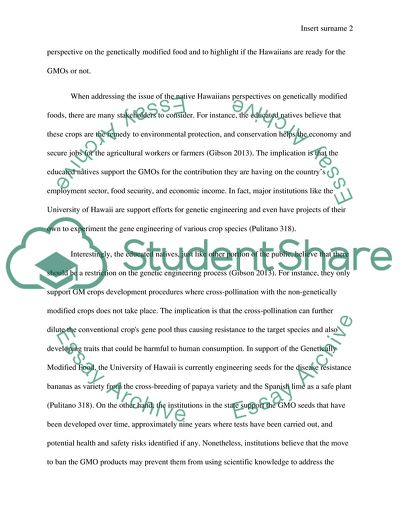Cite this document
(Native Hawaiian Perspectives on Genetically Modified Food Essay Example | Topics and Well Written Essays - 1500 words, n.d.)
Native Hawaiian Perspectives on Genetically Modified Food Essay Example | Topics and Well Written Essays - 1500 words. https://studentshare.org/religion-and-theology/1867835-native-hawaiian-perspectives-on-genetically-modified-food
Native Hawaiian Perspectives on Genetically Modified Food Essay Example | Topics and Well Written Essays - 1500 words. https://studentshare.org/religion-and-theology/1867835-native-hawaiian-perspectives-on-genetically-modified-food
(Native Hawaiian Perspectives on Genetically Modified Food Essay Example | Topics and Well Written Essays - 1500 Words)
Native Hawaiian Perspectives on Genetically Modified Food Essay Example | Topics and Well Written Essays - 1500 Words. https://studentshare.org/religion-and-theology/1867835-native-hawaiian-perspectives-on-genetically-modified-food.
Native Hawaiian Perspectives on Genetically Modified Food Essay Example | Topics and Well Written Essays - 1500 Words. https://studentshare.org/religion-and-theology/1867835-native-hawaiian-perspectives-on-genetically-modified-food.
“Native Hawaiian Perspectives on Genetically Modified Food Essay Example | Topics and Well Written Essays - 1500 Words”. https://studentshare.org/religion-and-theology/1867835-native-hawaiian-perspectives-on-genetically-modified-food.


